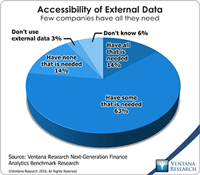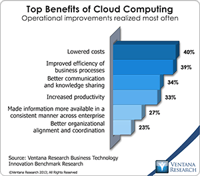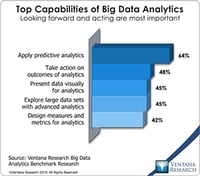Using information technology to make data useful is as old as the Information Age. The difference today is that the volume and variety of available data has grown enormously. Big data gets almost all of the attention, but there’s also cryptic data. Both are difficult to harness using basic tools and require new technology to help organizations glean actionable information from the large and chaotic mass of data. “Big data” refers to extremely large data sets that may be analyzed computationally...
Read More
Topics:
Big Data,
Data Science,
Planning,
Predictive Analytics,
Sales Performance,
Social Media,
Supply Chain Performance,
FP&A,
Human Capital,
Marketing,
Office of Finance,
Operational Performance Management (OPM),
Budgeting,
Connotate,
cryptic,
equity research,
Finance Analytics,
Kofax,
Statistics,
Operational Performance,
Analytics,
Business Analytics,
Business Performance,
Financial Performance,
Business Performance Management (BPM),
Datawatch,
Financial Performance Management (FPM),
Kapow,
Sales Performance Management (SPM)
It’s widely agreed that cloud computing is a major technology innovation. Many companies use cloud-based systems for specific business functions such as customer service, sales, marketing, finance and human resources. More generally, however, analytics and business intelligence (BI) have not migrated to the cloud as quickly. But now cloud-based data and analytics products are becoming more common. This trend is most popular among technology companies, small and midsize businesses, and...
Read More
Topics:
Big Data,
SaaS,
Sales Performance,
Social Media,
Governance,
Statistics,
cloud analytics,
IT Performance,
Analytics,
Business Analytics,
Business Intelligence,
Business Performance,
Cloud Computing,
Customer & Contact Center,
Data Integration,
Financial Performance,
Internet of Things,
Location Intelligence,
Operational Intelligence,
Workforce Performance,
Risk & Compliance (GRC),
cloud business intelligence
Our benchmark research consistently shows that business analytics is the most significant technology trend in business today and acquiring effective predictive analytics is organizations’ top priority for analytics. It enables them to look forward rather than backward and, participate organizations reported, leads to competitive advantage and operational efficiencies.
Read More
Topics:
Big Data,
Predictive Analytics,
Sales Performance,
Statistics,
IT Performance,
Operational Performance,
Analytics,
Business Analytics,
Business Collaboration,
Business Intelligence,
Business Performance,
Cloud Computing,
Customer & Contact Center,
Data Integration,
Financial Performance,
Governance, Risk & Compliance (GRC),
Information Applications,
Information Management,
Location Intelligence,
Operational Intelligence,
Workforce Performance












